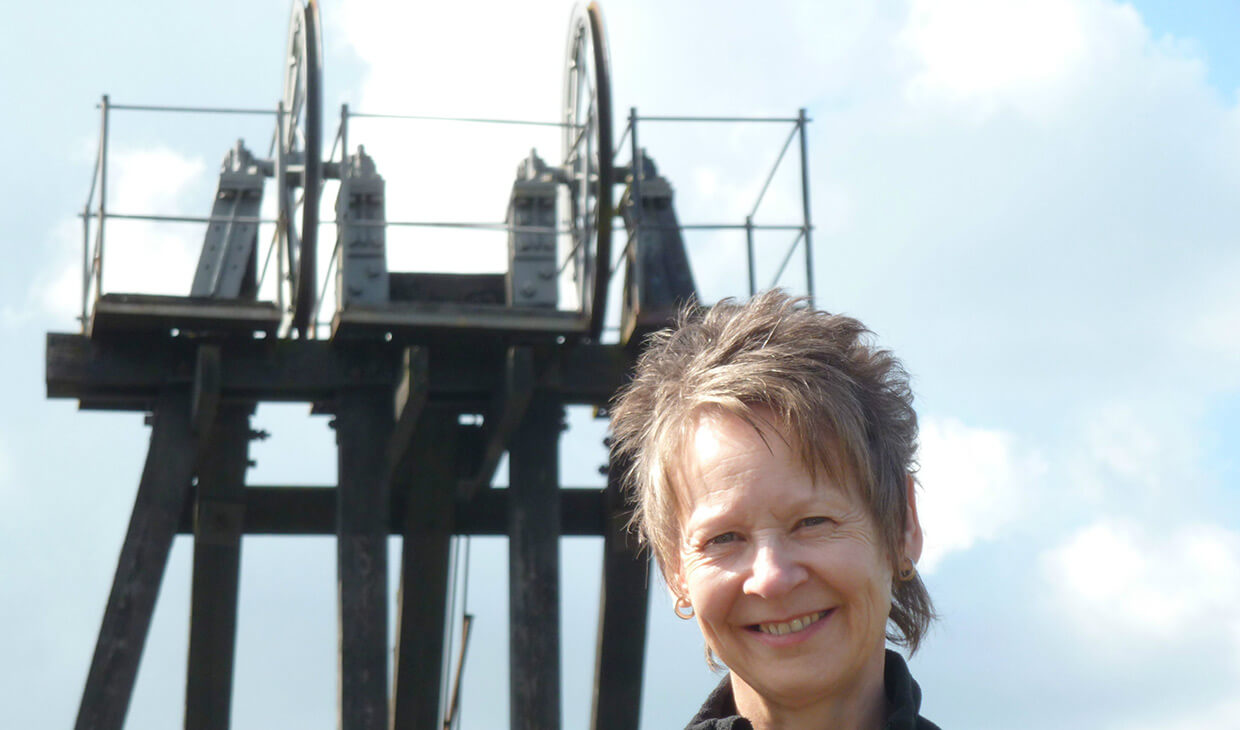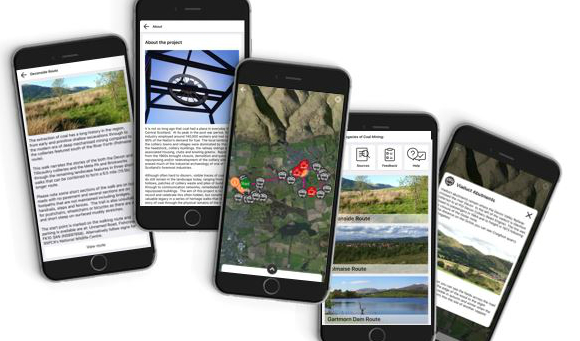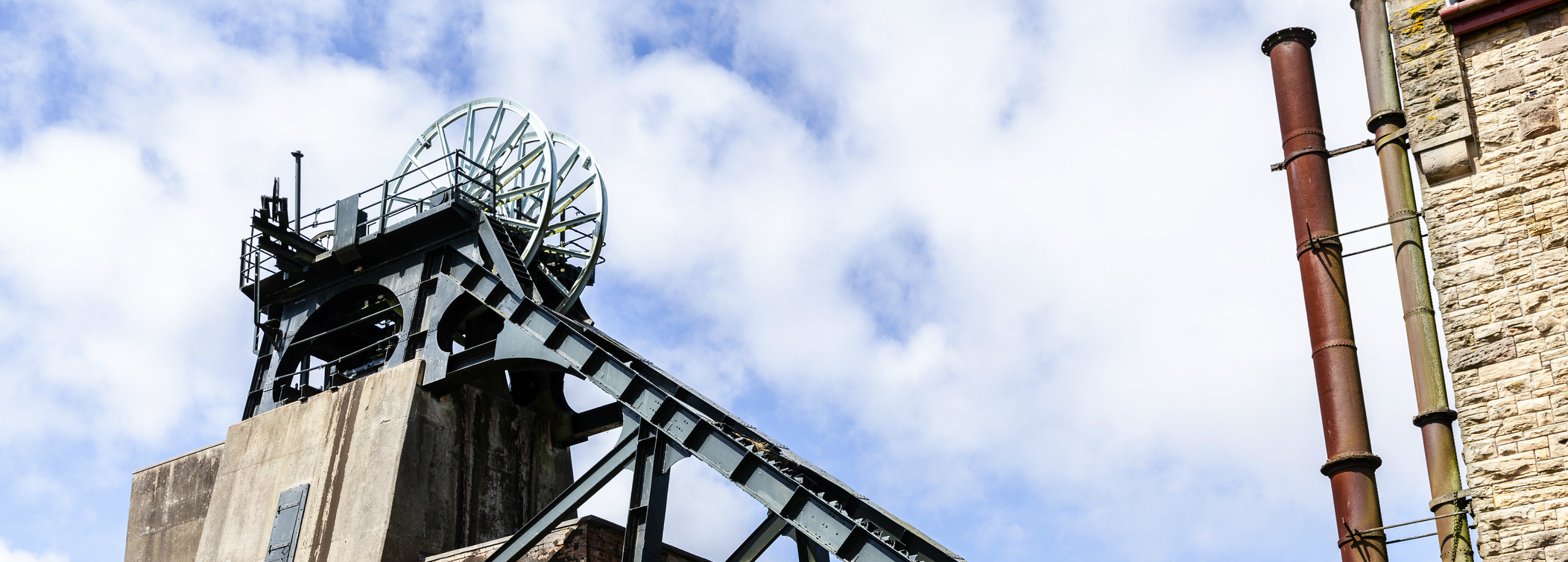A free smartphone app – created by a University of Stirling academic – is helping people to experience and explore Scotland’s coalmining heritage and the remnants of the industry during the current COVID-19 lockdown.
Dr Catherine Mills, of the Faculty of Arts and Humanities, launched the app – which enables users to follow a series of curated heritage walks using a mix of industrial archaeology, historic maps, images, and oral testimonies – in April 2019. Now celebrating its first anniversary, the app is proving popular with people walking the routes, as well as those who are using it to explore the environments virtually from their homes during the current restrictions.
The Landscape Legacies of Coal app launched with two routes around sites in Scotland’s coalfield, with that number growing to 12 over the last year – and a further nine in various stages of construction. The number of routes has increased as more people have engaged with Dr Mills and her team, sharing their own stories about Scotland’s once-booming coalmining industry.

Dr Catherine Mills
Interest has surged further in recent weeks as COVID-19 measures began, with many people now having more time to explore and engage with their immediate surroundings. With access to the outdoors partially restricted, the app’s ability to allow people to ‘explore from their armchair’ is also providing a much needed release, while also enabling people from further afield to virtually explore the Central Belt coalfield.
Dr Mills, Lecturer in Modern British Environmental History, said: “For many years, coal and mining was part of everyday life in Scotland. At its peak in the post-war period, the industry employed around 140,000 workers, and when you factor in their families you realise just how many people mining touched in this part of the world.
“During the last year, we have been pleased by how many people have contacted us to share their memories, and provide content for the app. That community engagement has played an important role in helping us to greatly expand the number of routes and content which the app offers.
“The Landscape Legacies project aims to provide a co-produced dynamic record of the rapidly disappearing landscape features and industrial archaeology of the coal industry, while increasing local cultural understanding of mining heritage, and of the social and economic significance of the industry.”

The app is free to download and is available for Android and Apple devices. It features a variety of walks, including four that depict the chronological development and decline of horse-drawn coal wagon ways in and around Alloa; the story of coal mining and wider industrial history of Dollar; and, venturing further afield, an exploration of colliery housing and the associated social environment of Newtongrange in Midlothian.
The plan is to continue expanding the number of routes during the next 12 months, including the soon to be launched ‘Ash Way’. This traces the route the coal ash slurry took from Kincardine and Longannet power stations to the storage lagoons at Preston Island, taking in the wider coal mining, maritime, industrial and cultural histories of Kincardine, Culross and Valleyfield.
It is the project’s first initiative in Fife and will be the first route that can be cycled in its entirety.
Further information is available on the Landscape Legacies of Coal webpage, Facebook page and Twitter. To download the free app, search for ‘Landscape Legacies of Coal’ on Apple and Android devices.
If you wish to get involved with the project, have an idea for a route, or a story to share, please get in touch with Dr Catherine Mills via Landscapelegaciesofcoal@stir.ac.uk.
Anyone who has already used the app and would like to provide feedback can do so by completing the online survey.
The app was generously supported by the Macrobert Arts Centre as part of their community heritage initiative in September 2017, which was based around the theme of coal.

